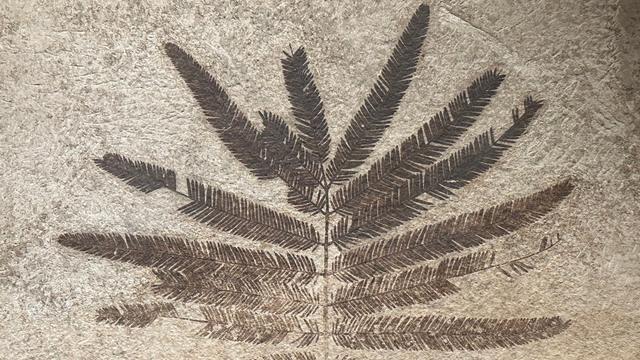Mondelez, #Nestle and Mars show flagrant disregard for #rainforests. A new #report finds they purchase #palmoil to use in dairy animal feed. Take a strong stance! Don't buy #Kitkat and #Snickers and #Boycottpalmoil #Boycott4Wildlife 🌴🚫🔥 https://palmoildetectives.com/2024/09/26/ecosystems-sell-dirt-cheap-for-palm-oil-filled-snickers-and-kitkat/?utm_source=mastodon&utm_medium=Palm+Oil+Detectives&utm_campaign=publer
#Rainforests in #Africa are poorly studied compared to the #Amazon yet demand for #palmoil and #mining is growing threatening #forest animals. Take action! #Boycottpalmoil 🌴🩸🤮🙊⛔️ #Boycott4Wildlife @palmoildetect https://palmoildetectives.com/2021/09/01/africas-rainforests-are-different-why-it-matters-that-theyre-protected/?utm_source=mastodon&utm_medium=Palm+Oil+Detectives&utm_campaign=publer
#Rainforests in #Africa are poorly studied compared to the #Amazon yet demand for #palmoil and #mining is growing threatening #forest animals. Take action! #Boycottpalmoil 🌴🩸🤮🙊⛔️ #Boycott4Wildlife @palmoildetect.bsky.social@bsky.brid.gy palmoildetectives.com/2021/09/01/a...
Africa’s rainforests are diffe...
Africa’s rainforests are diffe...
Don't use #palmoil in your #hair - it is destroying #rainforests all over the world. Boycott #Unilever, Johnson and Johnson #Loreal because they're worth it, worth avoiding! Buy #palmoilfree #shampoo🫧🪮🧴 #BoycottPalmOil #Boycott4Wildlife @palmoildetect https://palmoildetectives.com/2021/02/11/palm-oil-free-haircare/?utm_source=mastodon&utm_medium=Palm+Oil+Detectives&utm_campaign=publer
Borneo Forest Dragons 🦎 are cold-blooded #reptile royalty in the #rainforests of #Malaysia and #Indonesia. Endless forests are being destroyed for #palmoil and #mining. Fight for #lizards 👊💚when u shop #Boycottpalmoil #Boycott4Wildlife @palmoildetect https://wp.me/pcFhgU-8PU?utm_source=mastodon&utm_medium=Palm+Oil+Detectives&utm_campaign=publer
🦖🍽️ The #asteroid that killed #dinosaurs 66 million years ago transformed #Earth's #forests from open canopy to dense #rainforests, creating new ecological niches where many of today's #food crops first evolved.
Field Museum paleobotanist Mike Donovan explains how green beans, yams, #coffee, cacao, and other #Thanksgiving staples only began developing after dinosaurs disappeared, making these foundational foods a direct consequence of the mass extinction event.
👉 https://www.popsci.com/science/thanksgiving-dinner-dinosaurs/
In #rainforests of #Sumatra is a rare melody of "eee-wow eee-wow" by the Sumatran Ground Cuckoo - long thought #extinct. Now critically endangered by #palmoil #deforestation. Fight for them and #BoycottPalmOil #Boycott4Wildlife 🌴💩☠️ @palmoildetect.bsky.social https://palmoildetectives.com/2021/01/21/sumatran-ground-cuckoo-carpococcyx-viridis/?utm_source=mastodon&utm_medium=Palm+Oil+Detectives&utm_campaign=publer
Known locally as #Kalong the Malayan #FlyingFox of #Malaysia #Indonesia has a bad reputation but plays an outsized role keeping #rainforests alive. #Endangered by #palmoil. Use your wallet as a weapon 🌴⛔️#Boycottpalmoil #Boycott4Wildlife @palmoildetect.bsky.social https://wp.me/pcFhgU-9Zm?utm_source=mastodon&utm_medium=Palm+Oil+Detectives&utm_campaign=publer
Mondelez, #Nestle and Mars show flagrant disregard for #rainforests. A new #report finds they purchase #palmoil to use in dairy animal feed. Take a strong stance! Don't buy #Kitkat and #Snickers and #Boycottpalmoil #Boycott4Wildlife 🌴🚫🔥 @palmoildetect https://palmoildetectives.com/2024/09/26/ecosystems-sell-dirt-cheap-for-palm-oil-filled-snickers-and-kitkat/?utm_source=mastodon&utm_medium=Palm+Oil+Detectives&utm_campaign=publer
DYK #palmoil is in 60% of all supermarket goods? It's causing massive #ecocide in #rainforests. Fight back and boycott the greed and #greenwashing of #Mondelez #Unilever #Nestle Learn how to #BoycottPalmOil #Boycott4Wildlife 🧐🔥🌴🤮 @palmoildetect.bsky.social https://wp.me/pcFhgU-EV?utm_source=mastodon&utm_medium=Palm+Oil+Detectives&utm_campaign=publer





